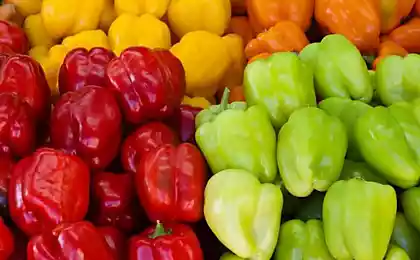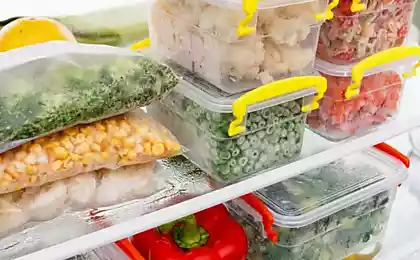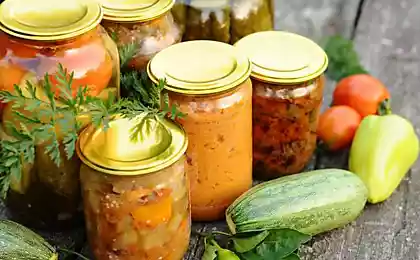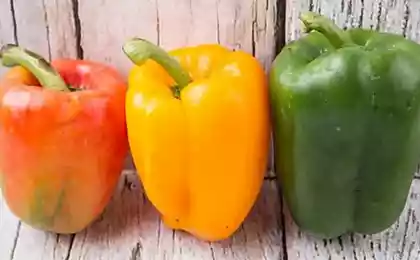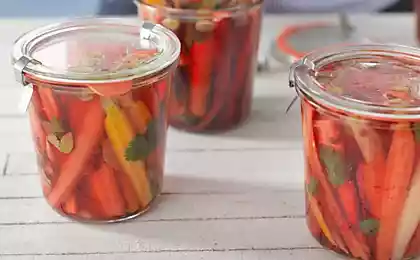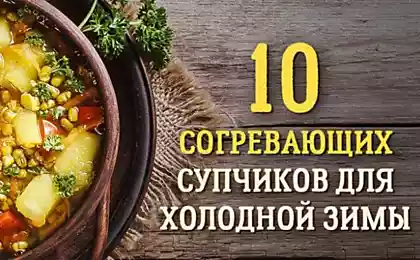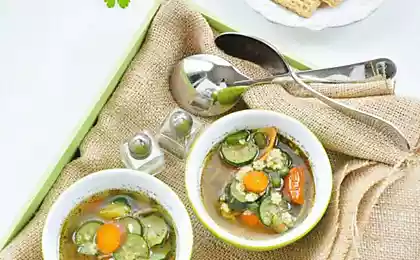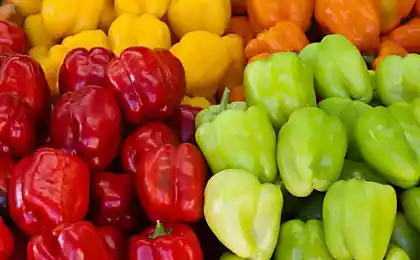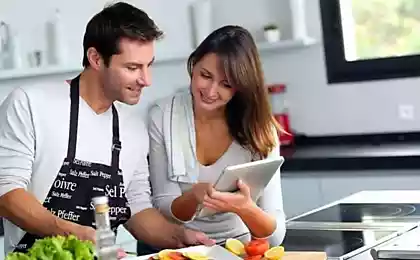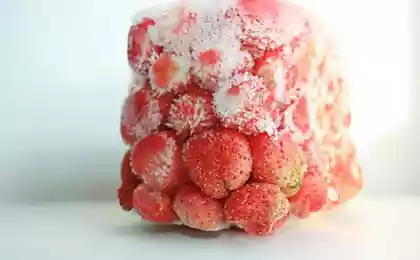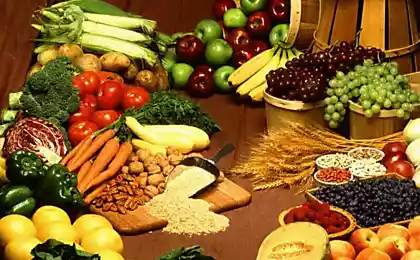157
In winter, we do not buy Bulgarian pepper, showing the original methods of preparing pepper for the future.
Nowadays, it is not a problem to buy Bulgarian pepper at any time of the year, there would be money and a supermarket nearby. But since vegetables are significantly more expensive in winter, it is advisable to stock them for the future. Fortunately, modern freezers allow you to store vegetables and fruits even until the new harvest. Below you will learn a few optimal ways to prepare preparations from Bulgarian pepper for the winter.

Nature made Bulgarian pepper perfect for stuffing. Juicy pulp is great to taste for fillings of meat, cheese and even cabbage. In addition, the hollow shape of the fruit is essentially a beautiful container and so asks that another tasty thing be placed inside.
Choose about the same size peppers, preferably pointed shape. Cut the top, then clean the insides of the seeds and partitions. Especially juicy fruits get wet with a napkin to get rid of excess moisture.
Insert the peppers into each other several pieces, so they will take up less space. Wrap the resulting stack of peppers in a bag and place in the freezer.

YouTube How to save space when harvesting pepper Even the pepper fruits inserted into each other are very voluminous. If you need to save even more space in the freezer, then use another recipe. As in the previous tip, select peppers of approximately the same size, cut the tops and clean the insides of seeds and partitions.
Then rub salt on the inside of each fruit and leave the so prepared pepper for one hour. After salting, the pepper will soften, and it can be compressed.

From each pepper, the juice released after salting. Wash the fruit thoroughly under running water to remove excess salt. Insert the fruits into each other and put them in a freezer bag. After salting, pepper becomes soft and malleable, due to which it takes up less volume. In a package of 1 liter, about ten fruits of Bulgarian pepper are placed.

To prepare a workpiece for salads, cut pepper cubes the size you like. It is desirable that the pieces are not too small, otherwise the cutting will come out of juice. Wet the chopped pepper with a paper towel. Place the slicing in a freezer bag or food container and send it to the freezer. You can also use as a container a plastic bottle with a wide neck (for example, juice), or a bottle with a cut top.

Very small prunings of pepper, which remained after the preparation of previous recipes, can also be prepared for the future by preparing pepper paste. To do this, fill the chopped pepper in a blender and grind to a state of puree. If you wish, you can add a bunch of greens to the pepper. Fill the mold paste and place it in the freezer.

After the puree freezes, remove it from the form and transfer the resulting washers into a separate package. This paste is perfect for the preparation of the first dishes, meat goulash and sauces.

A little time spent in the summer will allow you and your family to enjoy dishes from Bulgarian pepper all year round. For example, on the New Year you can treat loved ones with pepper stuffed with chicken breast, and on Christmas prepare a lean version of this dish with potatoes and mushrooms.

Nature made Bulgarian pepper perfect for stuffing. Juicy pulp is great to taste for fillings of meat, cheese and even cabbage. In addition, the hollow shape of the fruit is essentially a beautiful container and so asks that another tasty thing be placed inside.
Choose about the same size peppers, preferably pointed shape. Cut the top, then clean the insides of the seeds and partitions. Especially juicy fruits get wet with a napkin to get rid of excess moisture.
Insert the peppers into each other several pieces, so they will take up less space. Wrap the resulting stack of peppers in a bag and place in the freezer.

YouTube How to save space when harvesting pepper Even the pepper fruits inserted into each other are very voluminous. If you need to save even more space in the freezer, then use another recipe. As in the previous tip, select peppers of approximately the same size, cut the tops and clean the insides of seeds and partitions.
Then rub salt on the inside of each fruit and leave the so prepared pepper for one hour. After salting, the pepper will soften, and it can be compressed.

From each pepper, the juice released after salting. Wash the fruit thoroughly under running water to remove excess salt. Insert the fruits into each other and put them in a freezer bag. After salting, pepper becomes soft and malleable, due to which it takes up less volume. In a package of 1 liter, about ten fruits of Bulgarian pepper are placed.

To prepare a workpiece for salads, cut pepper cubes the size you like. It is desirable that the pieces are not too small, otherwise the cutting will come out of juice. Wet the chopped pepper with a paper towel. Place the slicing in a freezer bag or food container and send it to the freezer. You can also use as a container a plastic bottle with a wide neck (for example, juice), or a bottle with a cut top.

Very small prunings of pepper, which remained after the preparation of previous recipes, can also be prepared for the future by preparing pepper paste. To do this, fill the chopped pepper in a blender and grind to a state of puree. If you wish, you can add a bunch of greens to the pepper. Fill the mold paste and place it in the freezer.

After the puree freezes, remove it from the form and transfer the resulting washers into a separate package. This paste is perfect for the preparation of the first dishes, meat goulash and sauces.

A little time spent in the summer will allow you and your family to enjoy dishes from Bulgarian pepper all year round. For example, on the New Year you can treat loved ones with pepper stuffed with chicken breast, and on Christmas prepare a lean version of this dish with potatoes and mushrooms.
Billionaire daughter-in-law Victoria Beckham cries sneakily, mother-in-law brought
Prince Harry is proud of slimming Meghan Markle, she instantly came into shape after giving birth
